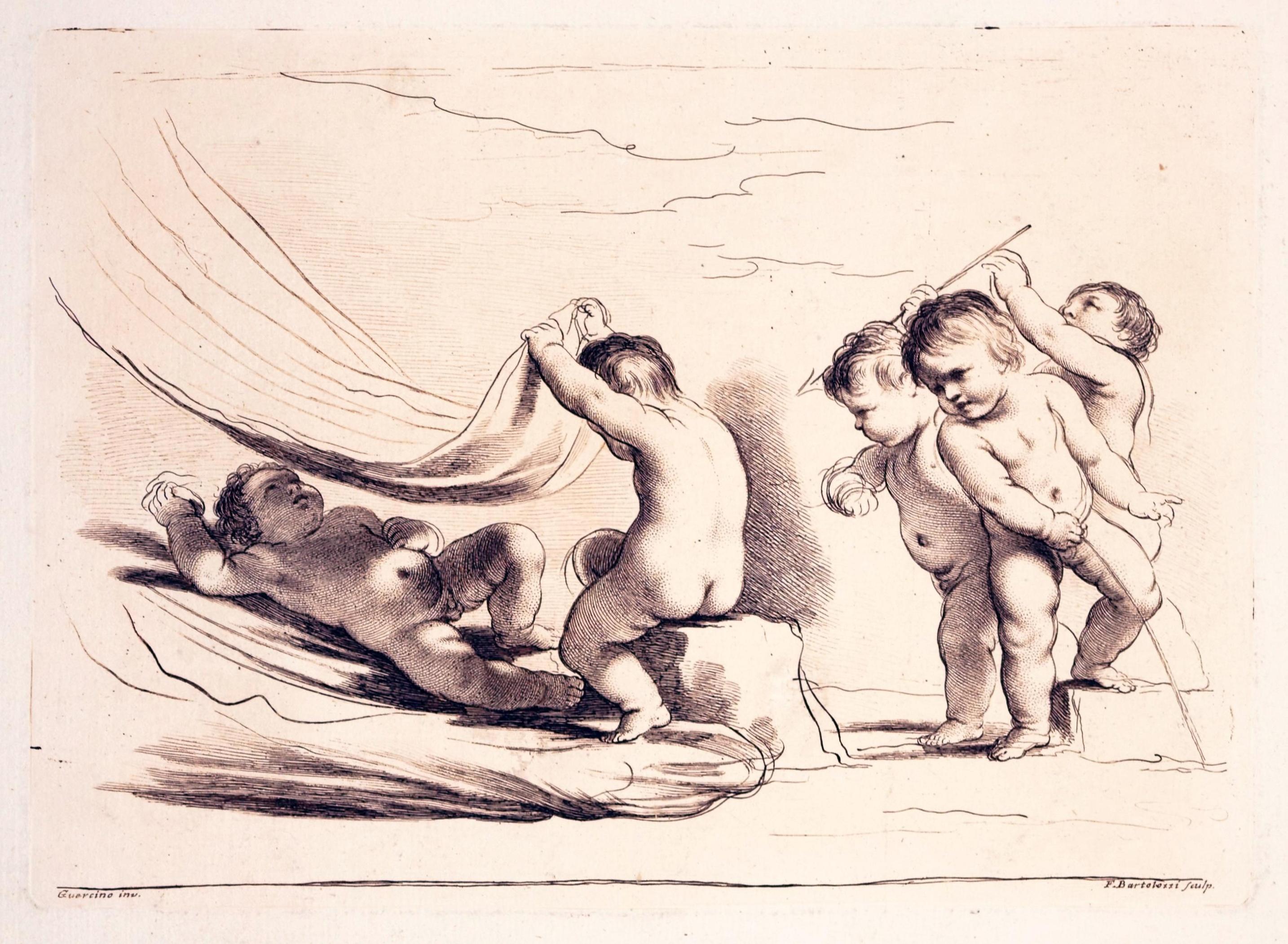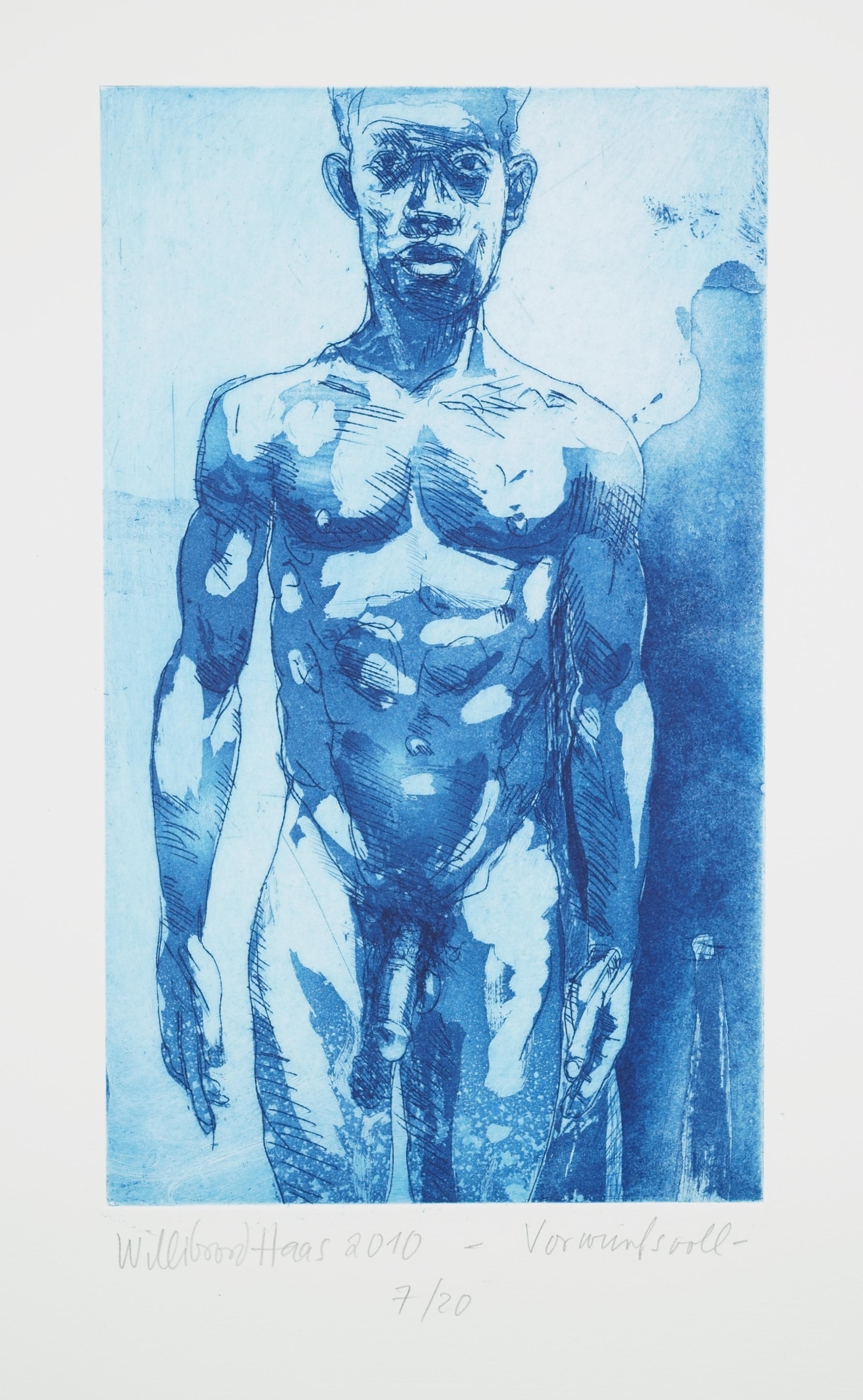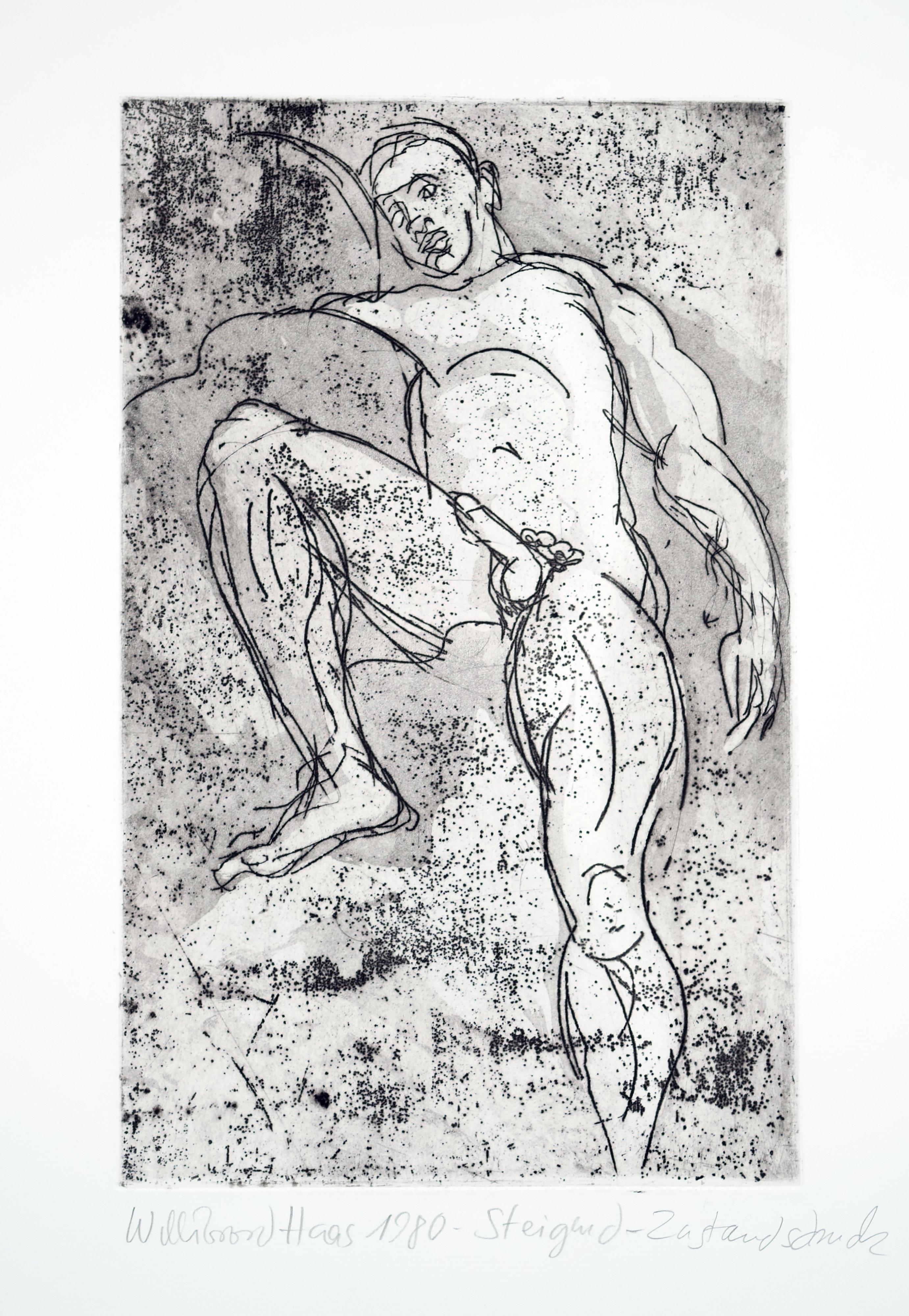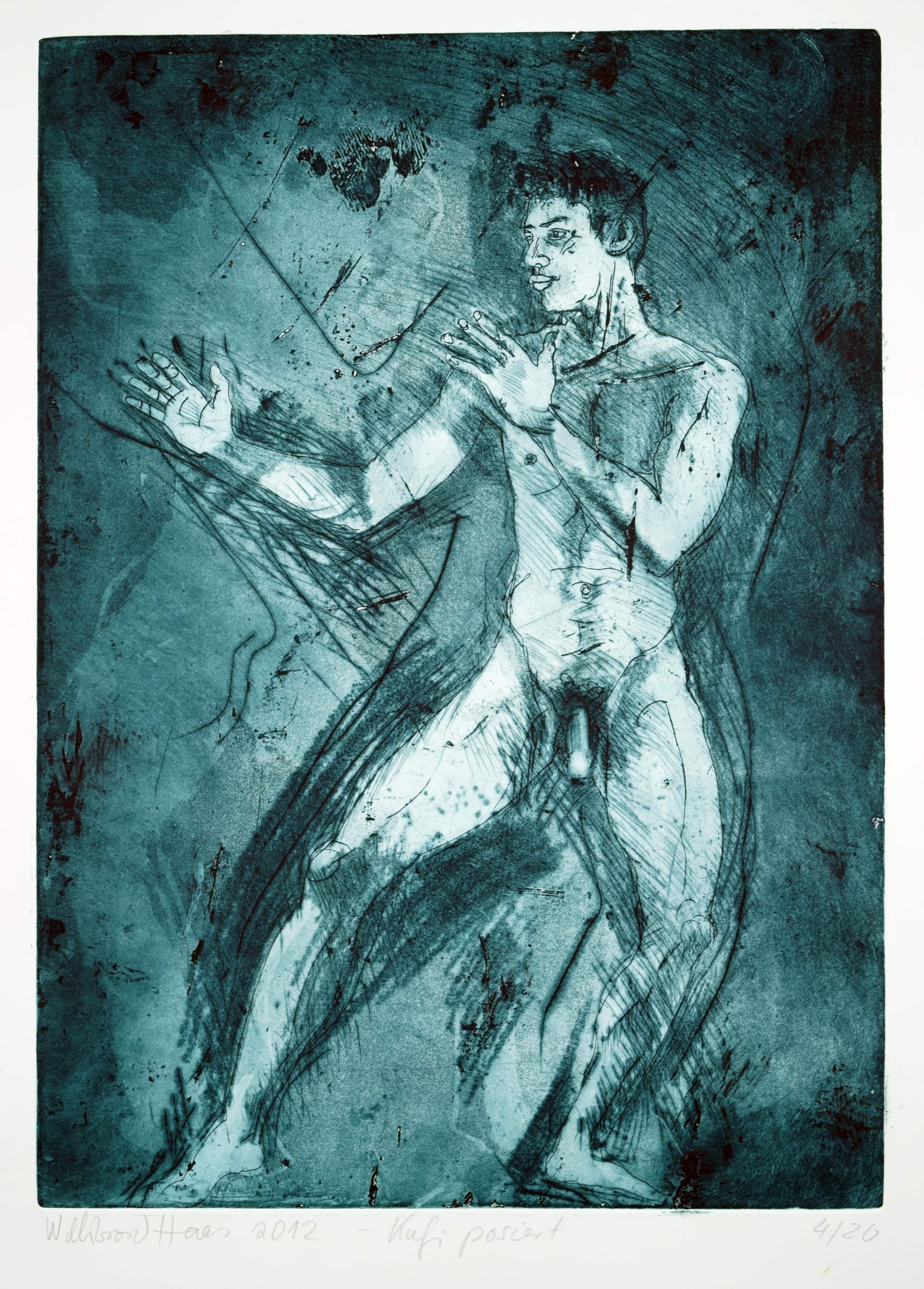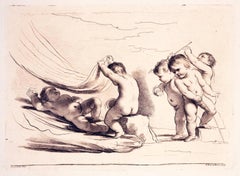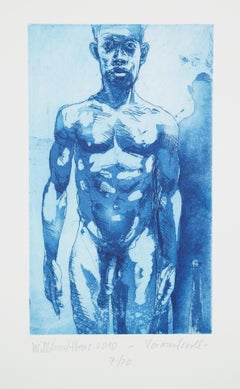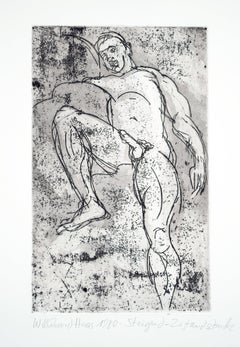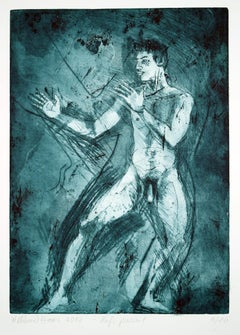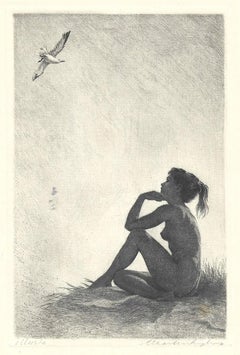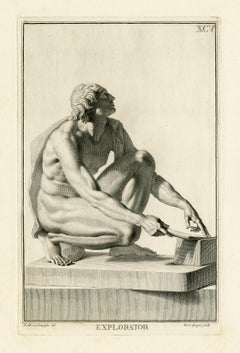Articoli simili a Four Young Women and the Boy Cupid / - Mysterious Virtuosity -
Vuoi altre immagini o video?
Richiedi altre immagini o video al venditore
1 di 9
Francesco BartolozziFour Young Women and the Boy Cupid / - Mysterious Virtuosity -1764
1764
Informazioni sull’articolo
Francesco Bartolozzi (1728 Florence - 1815 Lisbon), Mythological Scene with Four Young Women and the Boy Cupid, 1764. Crayon engraving on laid paper after a drawing by Guercino, 22 cm x 28.5 cm (plate size), 39.5 cm x 55.5 cm (sheet size), inscribed lower left “Guercino Invent.” as an engraving after Guercino and signed lower right “F. Bartolozzi scolpi” and dated and inscribed “Londra 1764”.
- The wide margin somewhat bumped and with small tears, overall somewhat dusty, otherwise a strong and precise impression in good condition
- Mysterious Virtuosity -
Created in the first year of Bartolozzi's life in London, the sheet illustrates the artist's celebrated virtuosity. This virtuosity led to Bartolozzi's call to London and his appointment as "Engraver to the King." Here, Bartolozzi combines a free-flowing linear design with partial stippling, giving the print an unprecedented graphic-painterly effect. This effect corresponds to the emerging appreciation of drawing as a direct form of artistic expression at that time.
As impressive as the scene is, it remains enigmatic. The four young women are clearly discussing matters of love with the Cupid boy. However, the undefined nature of the scene allows the viewer to complete the picture in their imagination.
About the artist
The son of goldsmith Gaetano Bartolozzi, young Francesco received his first artistic training from his father. He then attended the Academy of Fine Arts in Florence, studied antiquities in Rome, and joined Joseph Wagner's studio in Venice in 1745. Bartolozzi produced numerous engravings based on drawings by Venetian artists for Wagner's art publishing house. These engravings were popular due to their high quality. After engraving drawings by Guercino for George III's librarian, Richard Dalton, Dalton invited Bartolozzi to London in 1764. Bartolozzi lived there for the rest of his life. Bartolozzi was admitted to the Society of Artists, appointed engraver to the king, and elected to the newly founded Royal Academy of Art in 1769. While in London, Bartolozzi acquired the newly discovered crayon technique, which made it possible to translate chalk and charcoal drawings into prints by dotting. This technique became known in England as the "red chalk manner." Bartolozzi further developed this technique by using stippling to create surface effects instead of line-oriented designs, known as "stippled work." He was able to translate painterly and graphic effects into prints with great virtuosity, making Bartolozzi the most popular and sought-after reproduction engraver of his time. Angelika Kauffmann, for example, who also worked in London, had her works engraved by Bartolozzi. In 1802, at the age of 75, Bartolozzi accepted a position as director of the Academy of Fine Arts in Lisbon, where he worked until his death.
GERMAN VERSION
Francesco Bartolozzi (1728 Florenz - 1815 Lissabon), Mythologische Szene mit vier jungen Frauen und dem Amorknaben, 1764. Crayon-Stich auf Bütten nach einer Zeichnung von Guercino, 22 cm x 28,5 cm (Plattengröße), 39,5 cm x 55,5 cm (Blattgröße), unten links mit „Guercino Invent.“ als Stich nach Guercino ausgewiesen und unten rechts mit „F. Bartolozzi scolpi“ signiert und „Londra 1764“ datiert und ortsbezeichnet.
- der breite Rand etwas bestoßen und mit kleinen Einrissen, insgesamt etwas angestaubt, ansonsten kräftig-präziser Druck in gutem Zustand
- Geheimnisvolle Virtuosität -
Das Blatt ist im ersten Jahr von Bartolozzis Lebensabschnitt in London entstanden und veranschaulicht die gefeierte Virtuosität des Künstlers, die zum Ruf nach London und seiner Ernennung zum „Engraver of the King“ geführt hat. Bartolozzi verbindet hier eine frei-flüssige lineare Gestaltung mit einer partiellen Punktierung, so dass die Druckgrafik eine bisher nicht gesehene zeichnerisch-malerische Wirkung erhält, was der damals einsetzenden Schätzung der Zeichnung als unmittelbarem künstlerischen Ausdruck entspricht.
So virtuos die Szene dargestellt ist, so rätselhaft bleibt sie. Die vier jungen Frauen befinden sich offensichtlichen in einem auf den Amorknaben bezogenen Dialog über Liebesdinge. Indem die Szenerie drüber hinaus aber unbestimmt bleibt, wird sie zum Imaginationsraum des Betrachters, der das Bild auf diese Weise vollendet.
zum Künstler
Als Sohn des Goldschmieds Gaetano Bartolozzi erhielt der junge Francesco bei seinem Vater eine erste künstlerische Ausbildung. Anschließend besuchte er die Florentiner Kunstakademie, hielt sich zum Antikenstudium in Rom auf und ging dann nach Venedig, wo er 1745 in das Atelier Joseph Wagners eintrat. Für dessen Kunstverlag fertigte Bartolozzi zahlreiche Stiche nach Zeichnungen venezianischer Künstler an, die sich aufgrund ihrer kongenialen Umsetzung großer Beliebtheit erfreuten. Nachdem er für den Bibliothekar George III., Richard Dalton, Zeichnungen von Guercino gestochen hatte, lud ihn dieser 1764 nach London ein, wo Bartolozzi fortan ansässig war. Er wurde in die Society of Artists aufgenommen, zum Kupferstecher des Königs ernannt und 1769 in die neugegründete Königliche Kunstakademie gewählt. In London eignete er sich die neuerfundene Punktier- oder Crayon-Manier an, die es erlaubt, durch Punktierungen Kreide- und Kohlezeichnungen in die Druckgrafik zu übersetzen, weshalb sie in England auch unter dem Namen ‚Red Chalk Manner‘ bekannt geworden ist. Bartolozzi entwickelte diese Technik weiter, indem er statt einer linienorientierten Gestaltung durch Punktierungen Flächenwirkungen erzeugte, was als ‚Stippled Work‘ bezeichnet wurde. Auf diese Weise vermochte er sowohl malerische wie zeichnerische Wirkungen druckgrafisch umzusetzen, was er mit höchster Virtuosität beherrschte, so dass Bartolozzi zum beliebtesten und gefragtesten Reproduktionsstecher seiner Zeit wurde. So ließ beispielsweise Angelika Kauffmann, die ebenfalls in London tätig war, ihre Werke von Bartolozzi stechen. Im Alter von 75 Jahren folgte er, 1802, dem Ruf nach Lissabon, wo Bartolozzi bis zu seinem Tode als Direktor der Kunstakademie wirkte.
- Creatore:Francesco Bartolozzi (1727-1815, Italiano)
- Anno di creazione:1764
- Dimensioni:Altezza: 39 cm (15,36 in)Larghezza: 55 cm (21,66 in)Profondità: 1 cm (0,4 in)
- Tecnica:
- Movimento e stile:
- Periodo:1760-1769
- Condizioni:
- Località della galleria:Berlin, DE
- Numero di riferimento:1stDibs: LU2438216392432
Informazioni sul venditore
5,0
Venditore Oro
Venditori Premium con valutazione 4,3+ e tempi di risposta entro 24 ore
Fondazione nel 2014
Venditore 1stDibs dal 2023
17 vendite su 1stDibs
Tempo di risposta standard: 6 ore
- SpedizioneRecupero del preventivo…Spedizione da: Berlin, Germania
- Politica di reso
Alcune parti di questa pagina sono state tradotte automaticamente. 1stDibs non può garantire che le traduzioni siano corrette. L’inglese è la lingua predefinita del sito.
Garanzia di autenticità
Nell’improbabile caso in cui si verifichi un problema con l’autenticità di un articolo, contattaci entro un anno per ottenere un rimborso completo. DettagliGaranzia di rimborso
Se il tuo articolo non corrisponde alla descrizione, è danneggiato durante il trasporto o non arriva, contattaci entro 7 giorni per un rimborso completo. DettagliAnnullamento entro 24 ore
Hai un periodo di tolleranza di 24 ore per annullare il tuo acquisto, senza necessità di fornire spiegazioni.Venditori professionali selezionati
I nostri venditori di livello internazionale devono aderire a rigorosi standard di servizio e qualità, garantendo l’integrità delle inserzioni.Garanzia miglior prezzo
Se scopri che un venditore ha pubblicato altrove lo stesso articolo a un prezzo più basso, applicheremo lo stesso prezzo.Consegna globale affidabile
La nostra rete di vettori leader del settore offre opzioni di spedizione specializzate in tutto il mondo, inclusa la consegna personalizzata.Altro da questo venditore
Mostra tuttoPutti in an allegorical love game / - The Ambivalence of Eros -
Di Francesco Bartolozzi
Francesco Bartolozzi (1728 Florence - 1815 Lisbon), Putti in an allegorical love game, around 1764. Crayon engraving on laid paper after a drawing by Guercino, 21 cm x 29 cm (plate s...
Categoria
Anni 1760, Realismo, Stampe figurative
Materiali
Carta
Riprovevole
Willibrord Haas (*1936 Schramberg), Reproachful, 2010. acquaforte, 33,5 cm x 20 cm (formato lastra), 54 cm x 37,5 cm (formato foglio). Firmato "Willibrord Haas" in piombo dall'artist...
Categoria
Anni 2010, Realismo, Stampe (nudo)
Materiali
Carta
336 USD
In aumento
Willibrord Haas (*1936 Schramberg), in ascesa, 1980. Acquaforte, 35 cm x 22 cm (formato lastra), 53,5 cm x 38 cm (formato foglio). Firmato a matita dall'artista "Willibrord Haas", da...
Categoria
Anni 1980, Realismo, Stampe (nudo)
Materiali
Carta
Kufi posa
Willibrord Haas (*1936 Schramberg), Kufi pose, 2012. Acquaforte, 44 cm x 32 cm (formato lastra), 54 cm x 37,5 cm (formato foglio). Firmato "Willibrord Haas" in piombo dall'artista, d...
Categoria
Anni 2010, Realismo, Stampe (nudo)
Materiali
Carta
La prostrazione completamente nuda
Willibrord Haas (*1936 Schramberg), La prostrazione completamente nuda, 1999. Acquaforte, 32,5 cm x 23,5 cm (formato lastra), 54 cm x 37,5 cm (formato foglio). Firmato "Willibrord Ha...
Categoria
Anni 1990, Realismo, Stampe (nudo)
Materiali
Carta
Impigliato
Willibrord Haas (*1936 Schramberg), Entangled, 2008. acquaforte, 28 cm (altezza) x 17 cm (larghezza). Firmato "Willibrord Haas" a matita dall'artista, datato "2008", intitolato "Vers...
Categoria
Inizio anni 2000, Realismo, Stampe (nudo)
Materiali
Carta
Ti potrebbe interessare anche
Alla sauna. 1960, carta, litografia, 38x49 cm
Alla sauna
1960, carta, litografia, 38x49 cm
Dzidra Bauma (1930)
Dzidra Bauma lavora con la tecnica dell'acquerello. Dipinge composizioni figurative, ritratti, paesaggi, fiori e n...
Categoria
Anni 1960, Realismo, Stampe (nudo)
Materiali
Carta, Litografia
445 USD Prezzo promozionale
20% in meno
Stride for Days e Stride for Days Upside Down Dittico
Stride for Days e Stride for Days Upside Down Diptych di Amy Gardner [2021]
edizione_limitata
Serigrafia
Edizione numero 25
Dimensioni dell'immagine: H. 59,4 cm x L. 42 cm
Dimension...
Categoria
XXI secolo e contemporaneo, Realismo, Stampe figurative
Materiali
Carta, Schermo
Illusioni
Circa 1960. Acquaforte e incisione su carta vergata color crema, 5 3/4 x 4 pollici (141 x 102 mm), margini. Aree sparse di scolorimento a macchie nei margini, tono opaco minore. Quat...
Categoria
Metà XX secolo, Realismo, Stampe (nudo)
Materiali
Carta fatta a mano, Incisione, Acquaforte
Esploratore
Giovanni Domenico Campiglia, 'Esploratore', incisione, 1734, edizione sconosciuta, scarsa. Firmato 'Dom. Campiglia del." nella matrice, in basso a sinistra. Ottima impressione, su ca...
Categoria
Anni 1730, Realismo, Stampe (nudo)
Materiali
Incisione
Senza titolo
Di Théophile Alexandre Steinlen
Artista: Theophile Alexandre Steinlen (Svizzera, 1859-1923)
Titolo: Senza titolo
Anno: c.1915
Media: Litografia
Edizione: Sconosciuto, probabilmente 400
Carta: Pergame...
Categoria
Inizio XX secolo, Realismo, Stampe figurative
Materiali
Litografia
Nudo in Nuovo Messico
Di Philip Pearlstein
PHILIP PEARLSTEIN
Nudo nel Nuovo Messico, 1984
Litografia su carta d'arte
31 3/5 × 40 3/4 pollici
Firmato, intitolato, datato e numerato a matita di grafite dall'edizione limitata di...
Categoria
Anni 1980, Realismo, Stampe figurative
Materiali
Litografia
